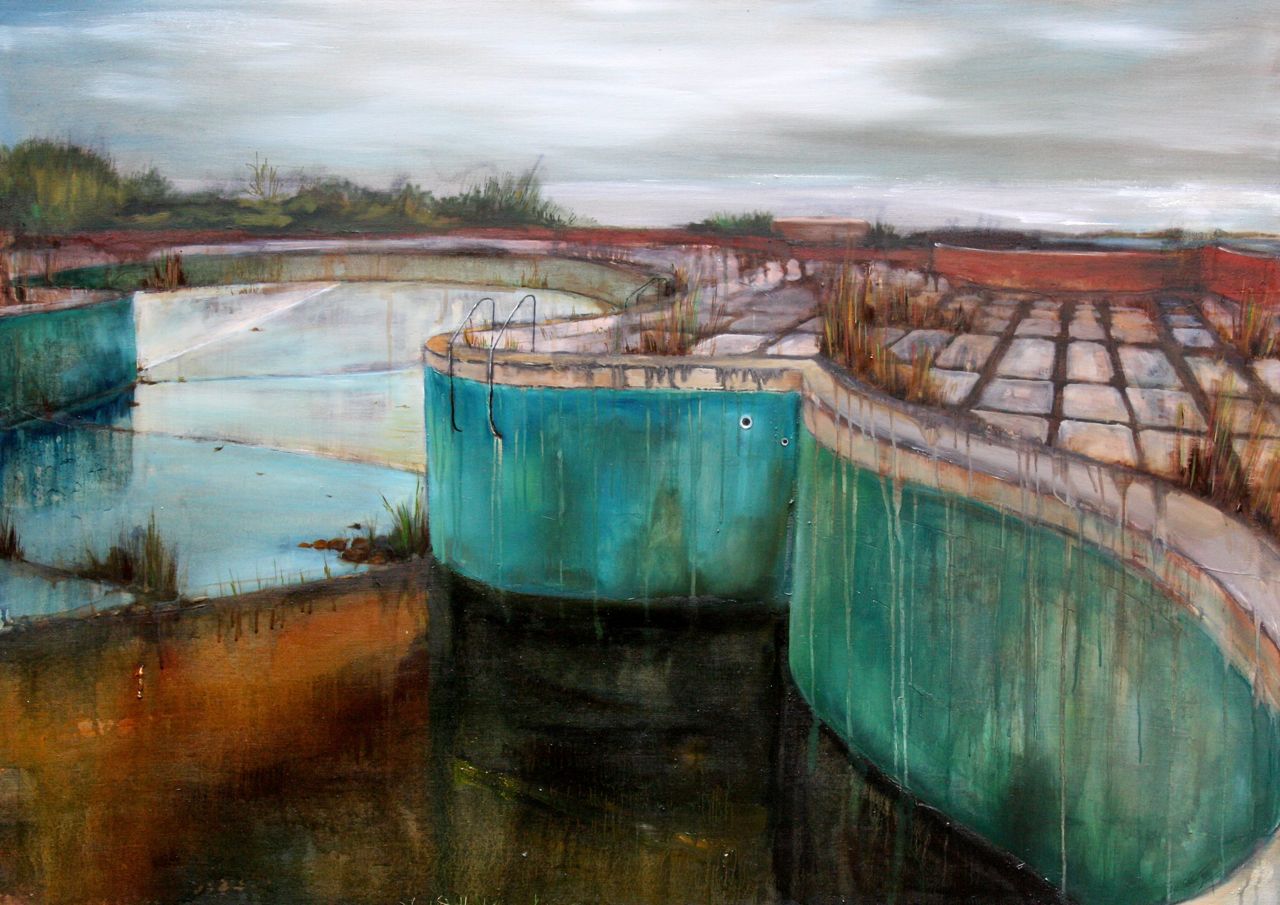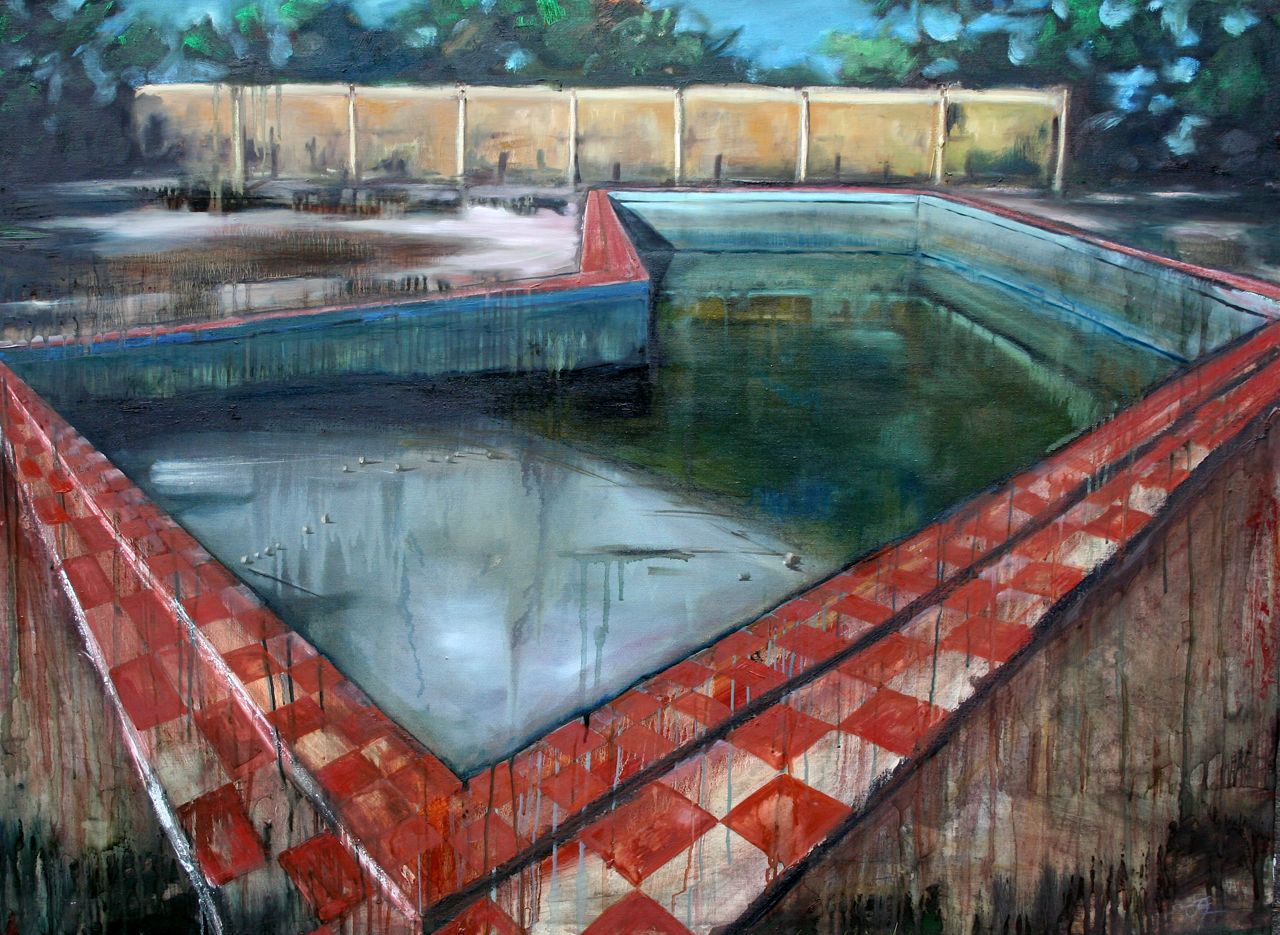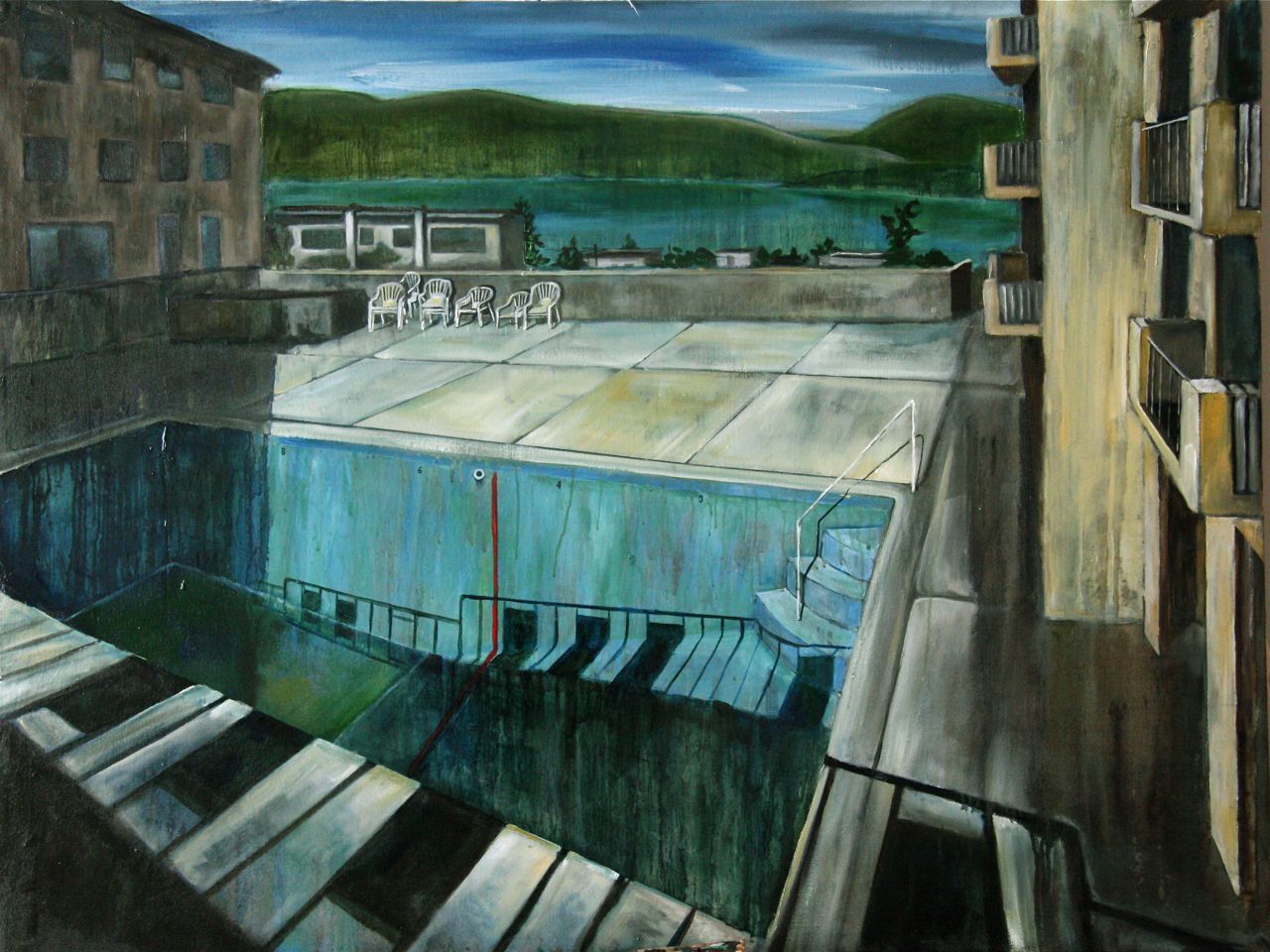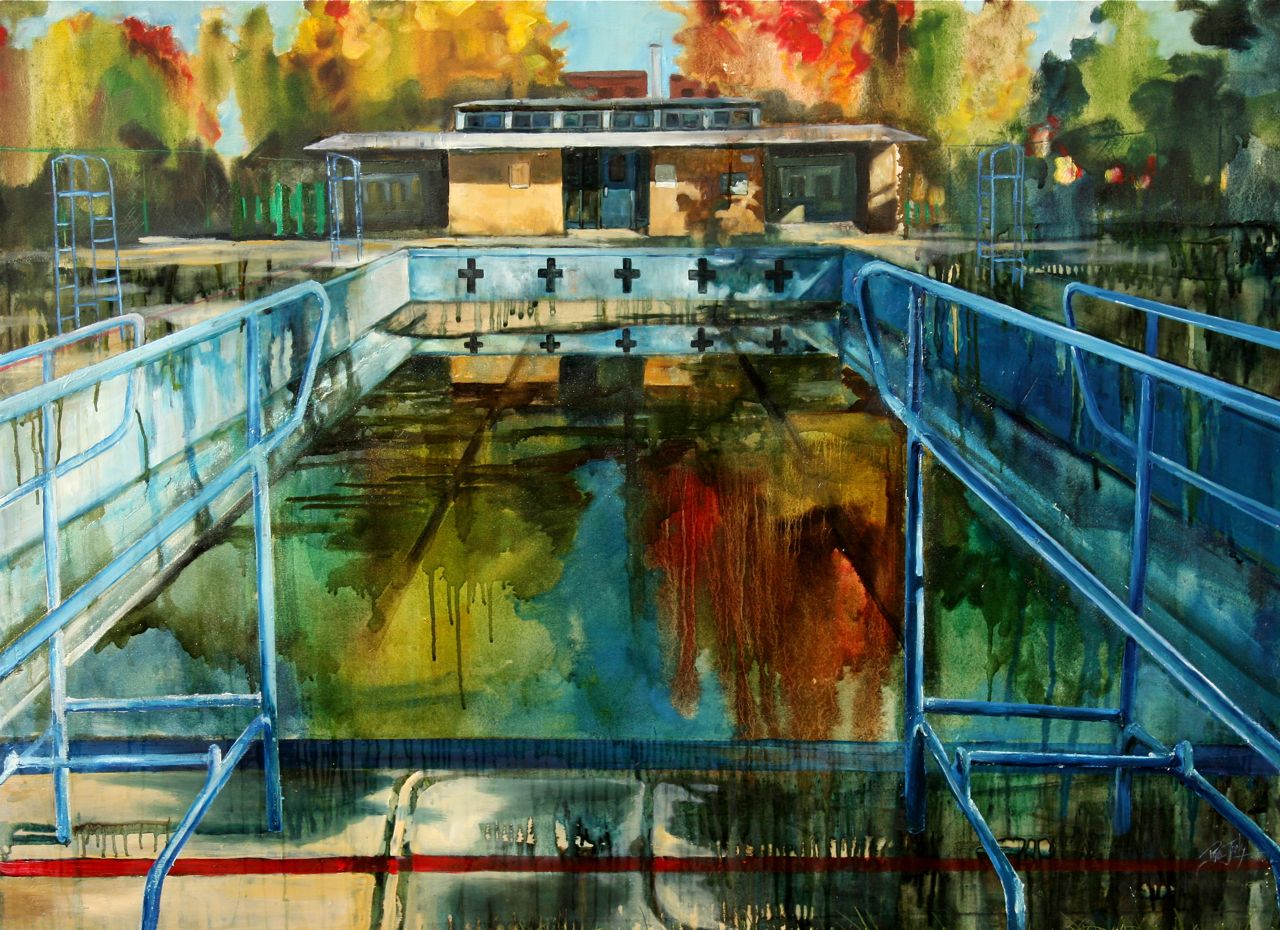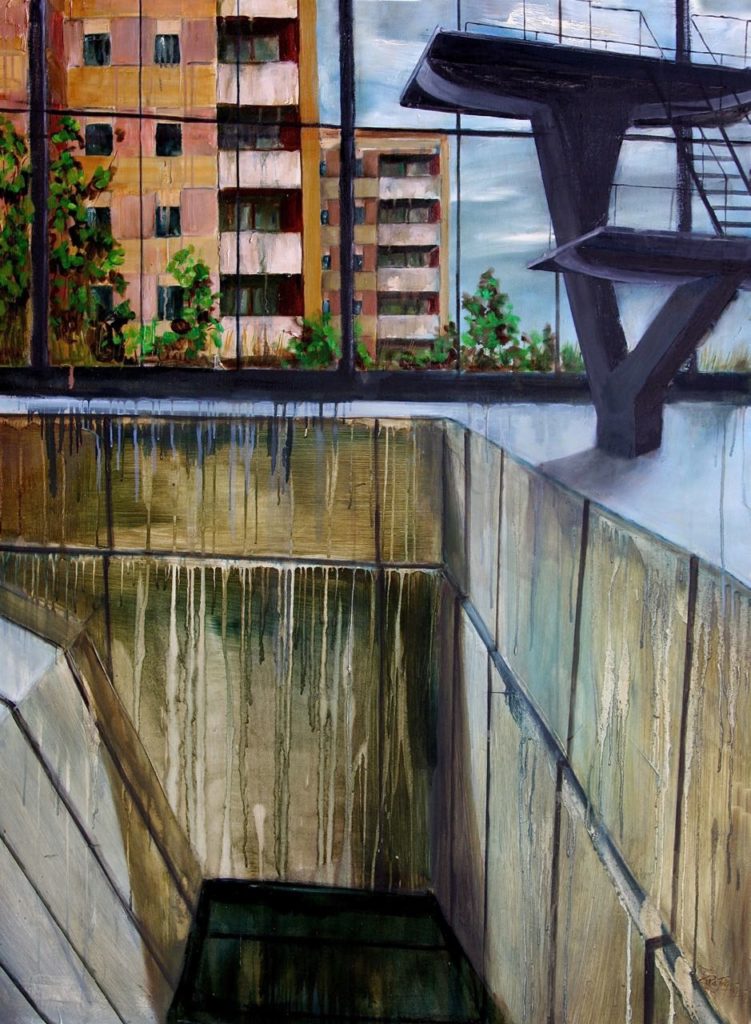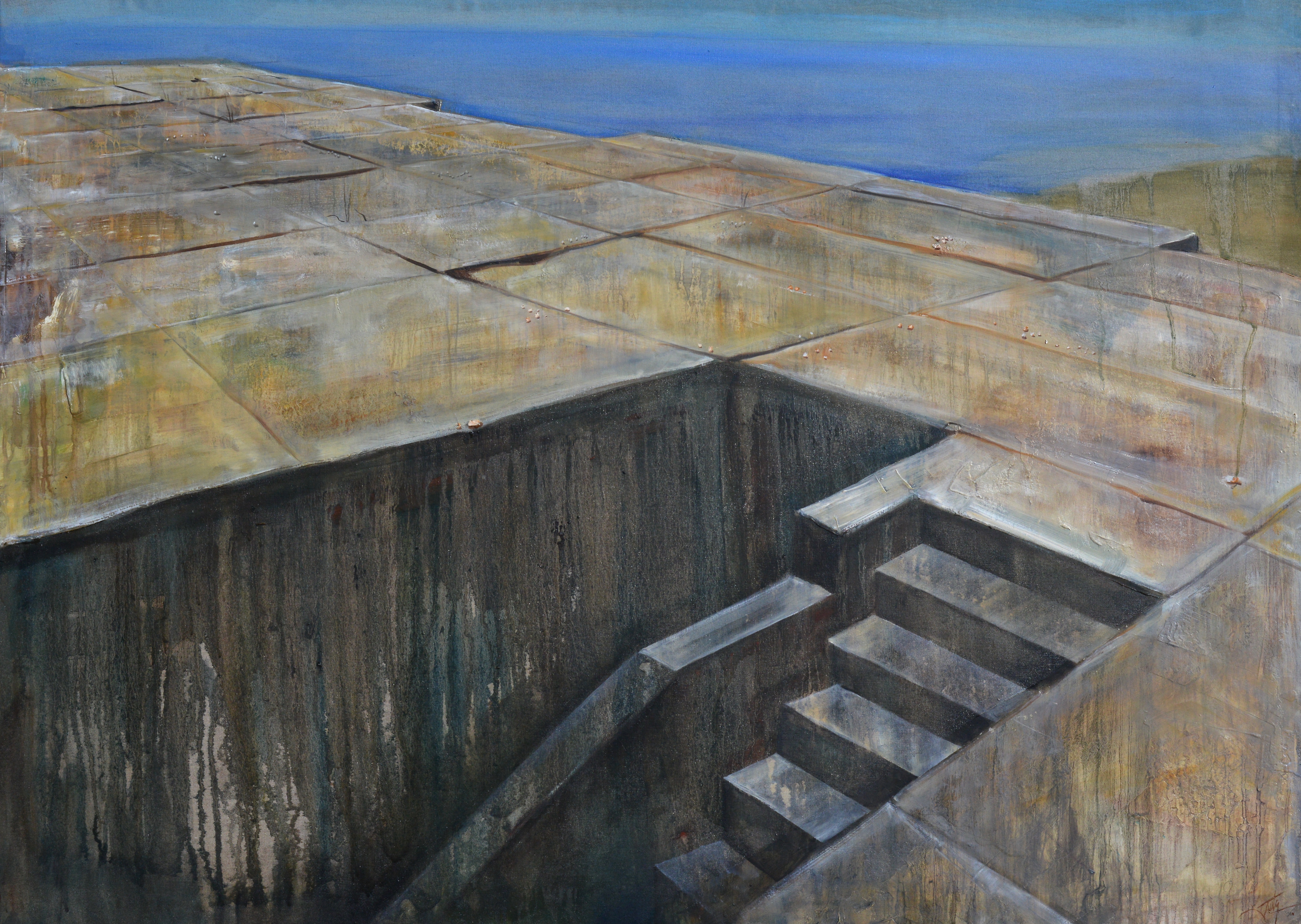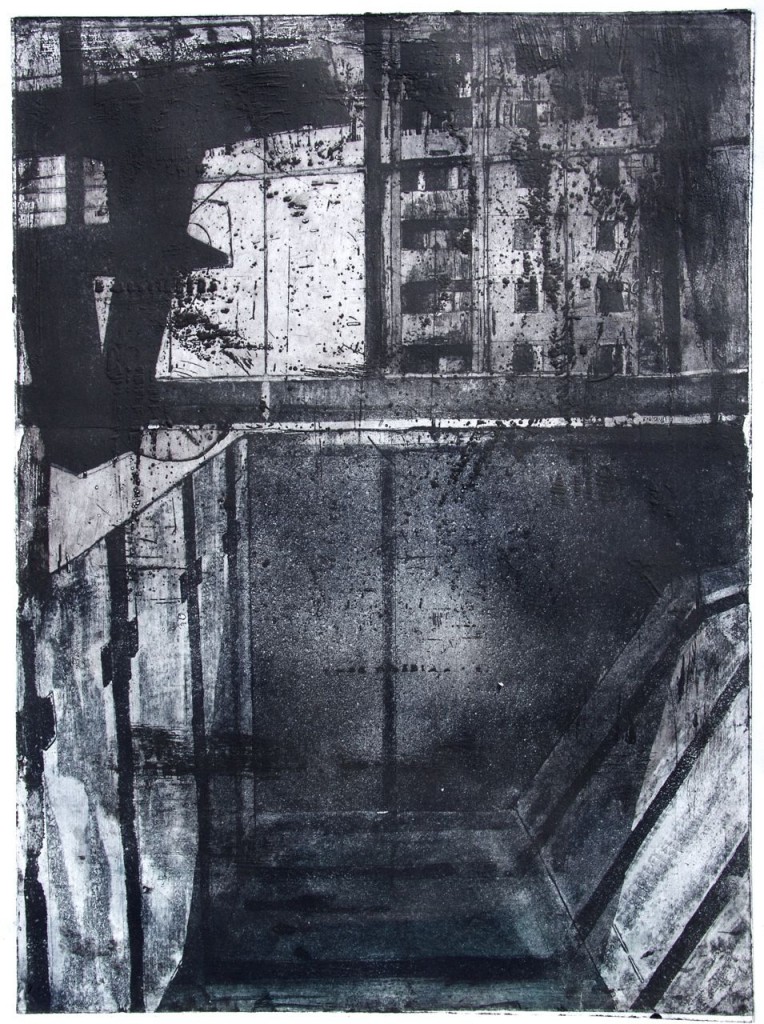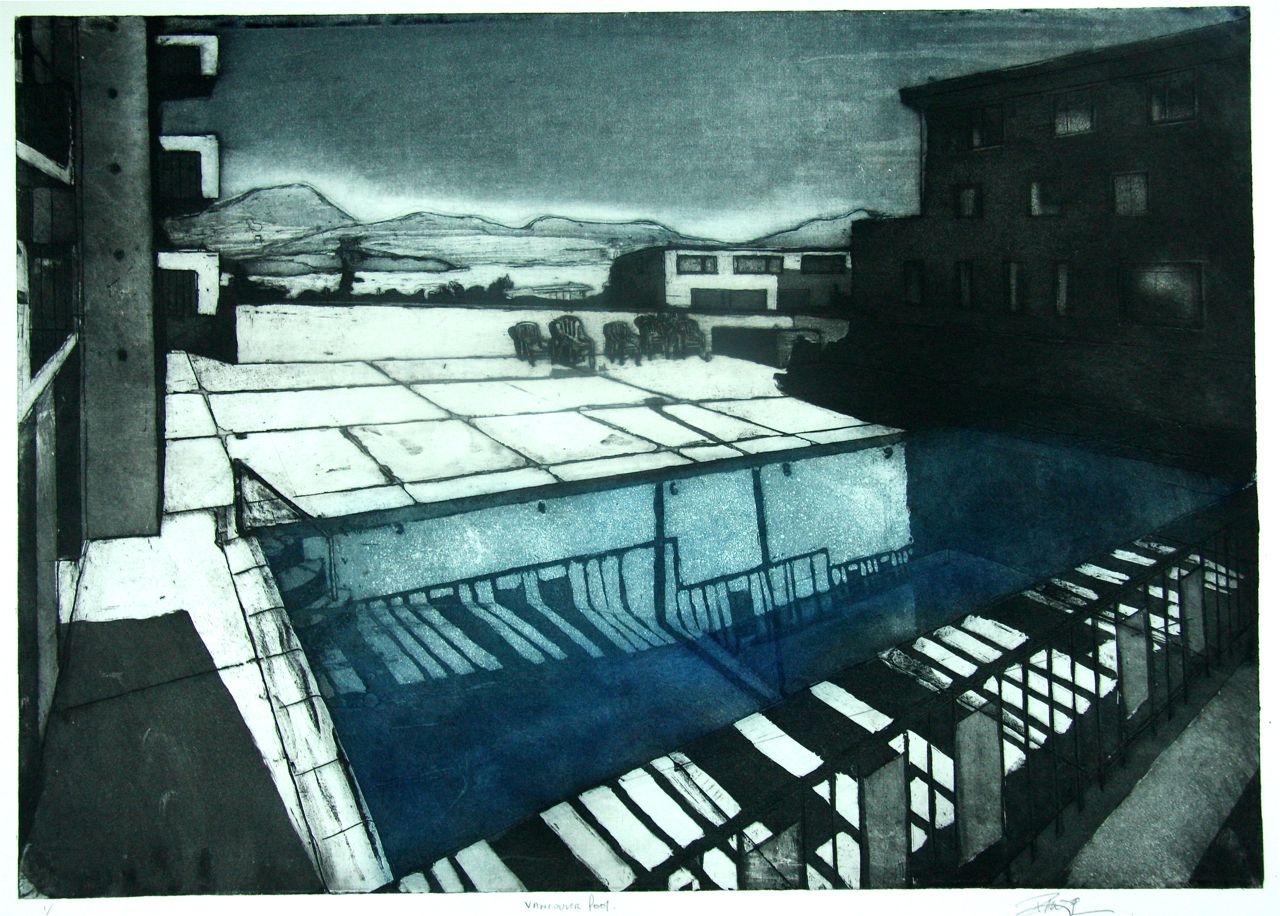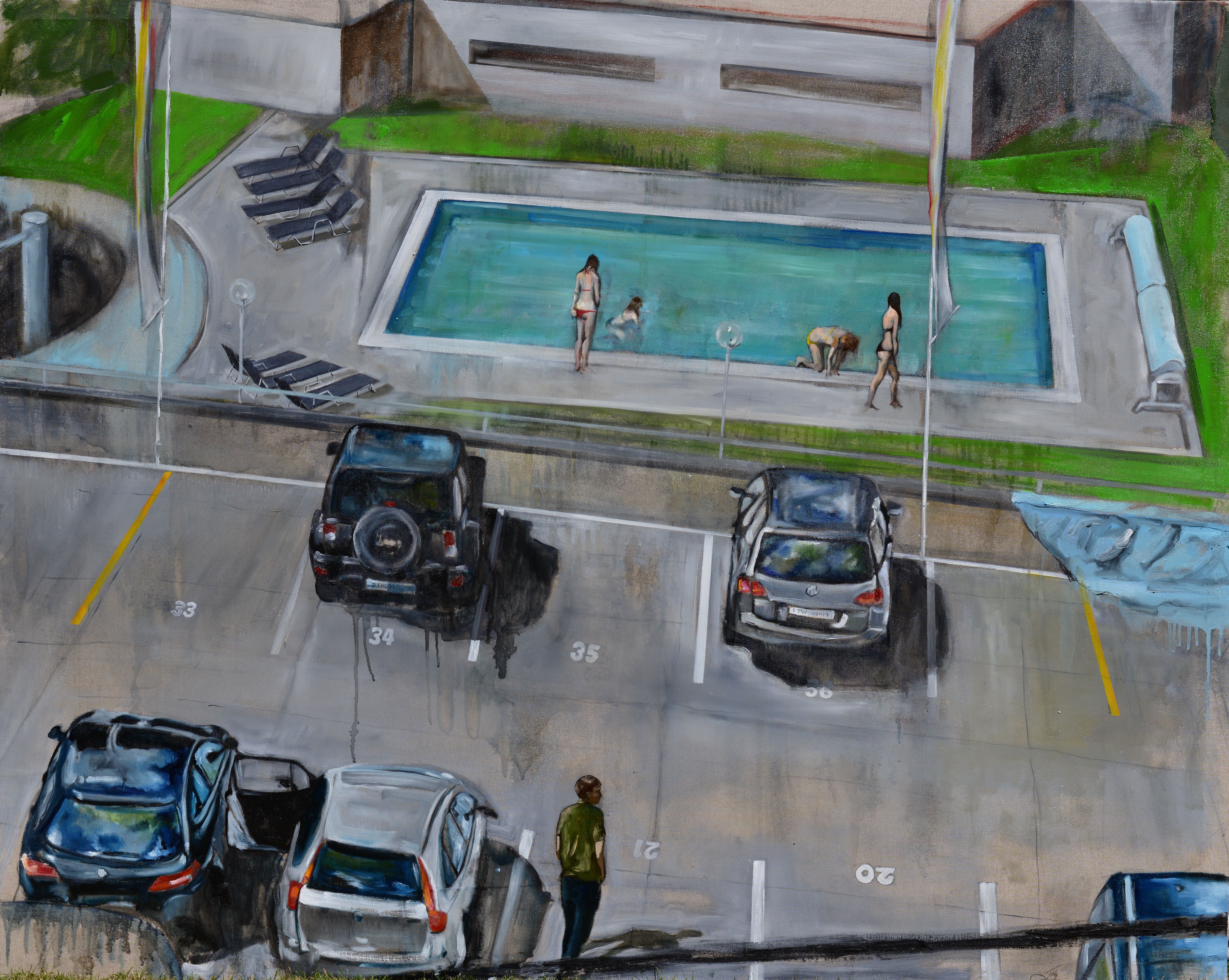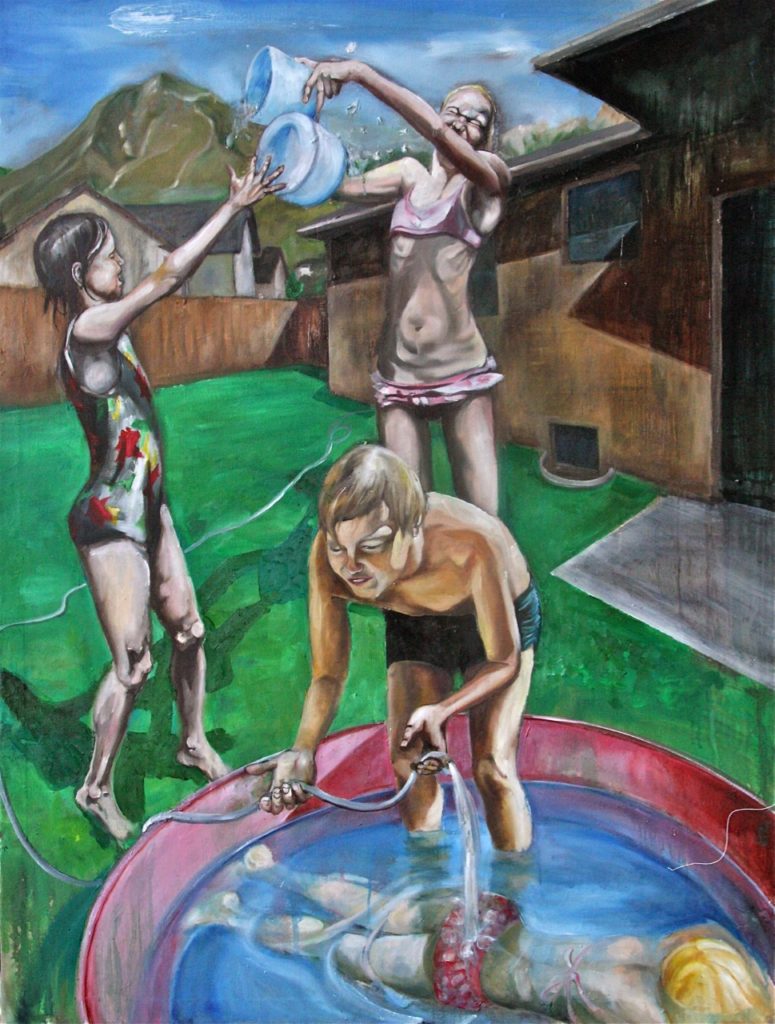–
In the early 1970’s David Hockney produced a group of swimming pool paintings in Southern California. The pictures were some of the finest icons of the age, brimming with the confidence of a material world. The paintings have always impressed me with there polished mechanical application of paint, the bright colors, there flatness … but particularly the symbolism inherent in the pieces. The pools spoke of enjoyment, liberalism, capitalism, and an age of leisure. The landscapes I have been working on operate on the other end of the ideological continuum. In a world where ruling ideologies have proven bankrupt my paintings of abandoned, destroyed, and decaying artifices are emblematic of the beginning of this new millennium. The images mostly derived from photo’s taken in travels to Asia and elsewhere tell a tale of consumption overwhelmed by events. In contrast to shiny slick surfaces, paint runs and dribbles, in the place of clearly delineated forms the images deconstruct and break apart. Yet they are not traditional landscapes because hard lines and mechanical patterns are still very evident of an urban sensibility.
My paintings are then derived from history on the way down when optimism is replaced by pessimism. They question the reification of progress and draw attention to the space left behind by modernity. The vacant pools are sign posts of the spiritual, personal, and political vacuum that lingers beneath the our collective consciousness.
With all my work an interplay exists between print and painted images. Here this is also the case. The paintings have been augmented with large 24″ prints. The subject has created the opportunity to produce landscape imagery that uses constructed patterns and shapes embossed into copper sheets. The neglect of the spaces mirrored inside by the torn metal where the acid has eaten through the surface.
As a print series the idea abandoned pools has been enlarged. Numerous sites exist that chronicle passages of time and values. For instance places of previous detention are preserved by new centres of authority to legitimize the passage of power. Yet these places can also remind us of the continued expansion of these motifs in our society they become the exposed remnants that allow us to name the hidden realities that lie below our view. The follies of commerce can also be seen in ruins, dead malls, casino’s, forgotten Olympic facilities, abandoned housing complexes are ruins that allow for reflection.
